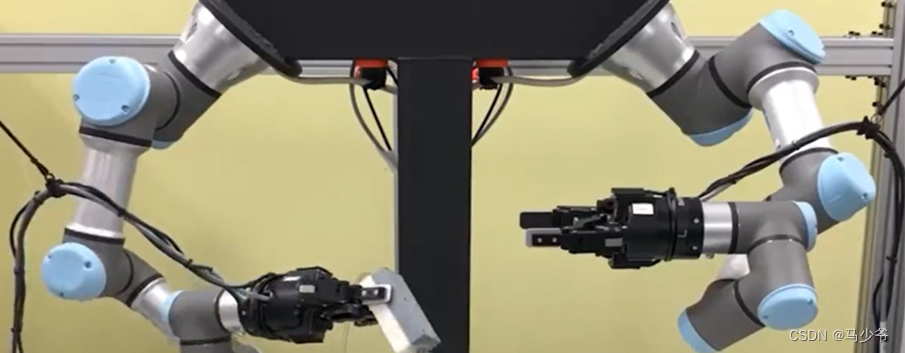当前位置:网站首页>Opencv maximum filtering (not limited to images)
Opencv maximum filtering (not limited to images)
2022-06-24 08:52:00 【Coding leaves】
opencv There are many filter functions in , Such as median filtering , But there is no maximum and minimum filtering . This article will introduce how to use python numpy Realize the maximum filtering function , It can be said that there is no need to resort to opencv That is to say .
1 Defined function maxBlur
The function that defines the maximum filter is maxBlur, contain 3 Parameters , They are as follows :
(1)image: The input image ,array type .
(2)kernel: Maximum range ,tuple type , The first element represents x The range in which the direction takes the maximum value , The second element represents y The range in which the direction takes the maximum value .
(3)limit: Elements that require maximum filtering ,tuple type , Such as (a,b) Indicates that the range of pixel values is [a, b] The maximum value filtering is performed only for pixels of .
This function achieves the following compatibility :
(1) Suitable for grayscale pictures or RGB picture .
(2) Not limited to arrays of images ,array.
(3) Suitable for any number of channels .
2 Reference procedure
# -*- coding: utf-8 -*-
"""
The official account of Lele perception school
@author: https://blog.csdn.net/suiyingy
"""
import numpy as np
def maxBlur(image, kernel=(3, 3), limit=(0, 255)):
"""
Parameters
----------
image : array, Input matrix or array .
kernel : tuple or list, optional
Respectively x、y The range of the maximum value in the direction . The default is (3, 3).
limit : tuple or list, optional
Specifies the pixel range for maximum filtering . The default is (0, 255).
Returns
-------
image_c : array, Processed matrix or array .
"""
image_c = image.copy()
if len(image_c.shape) == 2:
image_c = image_c[:, :, np.newaxis]
h, w, c = image_c.shape
image_c1 = image_c.copy()
for i in range(h):
for j in range(w):
x1 = max(j-kernel[0]//2, 0)
x2 = min(x1 + kernel[0], w)
y1 = max(i-kernel[1]//2, 0)
y2 = min(y1 + kernel[1], h)
for k in range(c):
if image_c[i, j, k] >= limit[0] and image_c[i, j, k] <= limit[1]:
sub_img = image_c1[y1:y2, x1:x2, k]
image_c[i, j, k] = np.max(sub_img)
if len(image.shape) == 2:
image_c = image_c.reshape(h, w)
return image_c
if __name__ == '__main__':
np.random.seed(1)
x = np.random.randint(0, 256, (10, 10))
x[x<150] = 0
y = maxBlur(x)
print('x:\n', x)
print('y:\n', y)
3 test result

More 3D 、 Please pay attention to two-dimensional perception algorithm and financial quantitative analysis algorithm “ Lele perception school ” WeChat official account , And will continue to update .
边栏推荐
猜你喜欢

It is enough to read this article about ETL. Three minutes will let you understand what ETL is
![[team management] 25 tips for testing team performance management](/img/bd/0ef55630de43efcf5aa663f3099fce.jpg)
[team management] 25 tips for testing team performance management

opencv最大值滤波(不局限于图像)

MySQL | 存储《康师傅MySQL从入门到高级》笔记

Wan Weiwei, a researcher from Osaka University, Japan, introduced the rapid integration method and application of robot based on WRS system

Liunx Mysql安装
![Jenkins is deployed automatically and cannot connect to the dependent service [solved]](/img/fe/f294955a9bdf7492aab360e44e052d.png)
Jenkins is deployed automatically and cannot connect to the dependent service [solved]

数据中台:中台架构及概述

疫情、失业,2022,我们高喊着摆烂和躺平!

What is graph neural network? Figure what is the use of neural networks?
随机推荐
Using skills of xargs -- the way to build a dream
【牛客】把字符串转换成整数
Detailed explanation of Base64 coding and its variants (to solve the problem that the plus sign changes into a space in the URL)
双指针模拟
Increase insert speed
MySQL | store notes of Master Kong MySQL from introduction to advanced
GradScaler MaxClipGradScaler
阿里资深软件测试工程师推荐测试人员必学——安全测试入门介绍
4275. Dijkstra序列
第七章 操作位和位串(三)
A tip to read on Medium for free
工具类
不能改变虚拟机电源状态报错解决方案
用VNC Viewer的方式远程连接无需显示屏的树莓派
What is the future development trend of Business Intelligence BI
Send custom events in QT
2021-05-20computed和watch应用与区别
1704. 判断字符串的两半是否相似
SLAM14讲中Sophus包的安装问题
The pie chart with dimension lines can set various parameter options